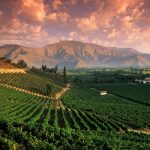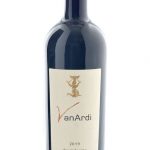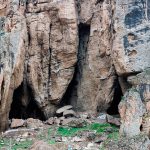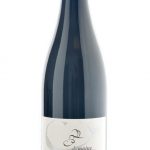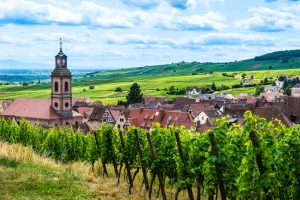 Alsace is quite possibly the most picturesque wine region in all France. This fairy tale land of beautifully restored half-timbered houses, flower bedecked balconies and window boxes, and of course vineyards has served as the setting for many a movie, including Sleepy Beauty. On account of its flavorful position bounded by the Vosges Mountains to the west, which block out the dreary maritime weather that plagues so much of the rest of northern France, and the Rhine River and Germany to the east, Alsace also ranks as the sunniest province in northern France. This extra sunshine makes Alsace an ideal spot for the cultivation of the vine and the production of premium wines. Alsace is also a leader in organic viticulture with the highest percentage of organic grape growers of any wine region in France.
Alsace is quite possibly the most picturesque wine region in all France. This fairy tale land of beautifully restored half-timbered houses, flower bedecked balconies and window boxes, and of course vineyards has served as the setting for many a movie, including Sleepy Beauty. On account of its flavorful position bounded by the Vosges Mountains to the west, which block out the dreary maritime weather that plagues so much of the rest of northern France, and the Rhine River and Germany to the east, Alsace also ranks as the sunniest province in northern France. This extra sunshine makes Alsace an ideal spot for the cultivation of the vine and the production of premium wines. Alsace is also a leader in organic viticulture with the highest percentage of organic grape growers of any wine region in France.
In Alsace, white wine reigns supreme. This is a matter of local preference and tradition, in spite of the province’s growing production of very noteworthy Pinot Noir wines and the contemporary clamor for red wine. Pinot Blanc is the staple of Alsace, where it makes a dry, fresh, flavorful wine of considerable merit. Nonetheless, Alsace’s reputation lies more typically in the crafting of some of the world’s finest Riesling, Gewürztraminer, and Pinot Gris – the vast majority of which are made dry rather than sweet. The relative dryness of most Alsatian wines may come as a surprise to many, especially those for whom German sounding names and tall thin green bottles are synonymous with sweetness. However, Alsatian wines are unique unto themselves and rarely do they resemble their German counterparts in style, flavor, or level of residual sugar. Robert Parker Jr. has called the wines of Alsace “some of the greatest white wines produced on the planet,” and some of the most pleasurable and hedonistic, so isn’t it time the world discovered this sleeping beauty and its treasure trove of undiscovered wines?

